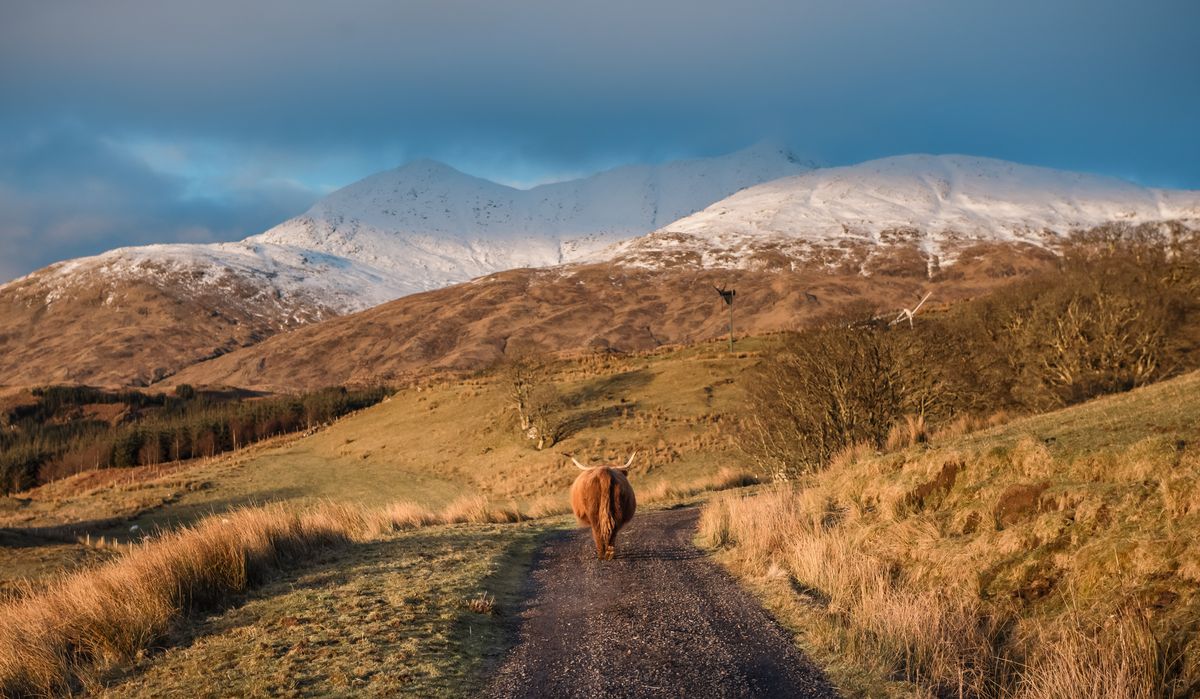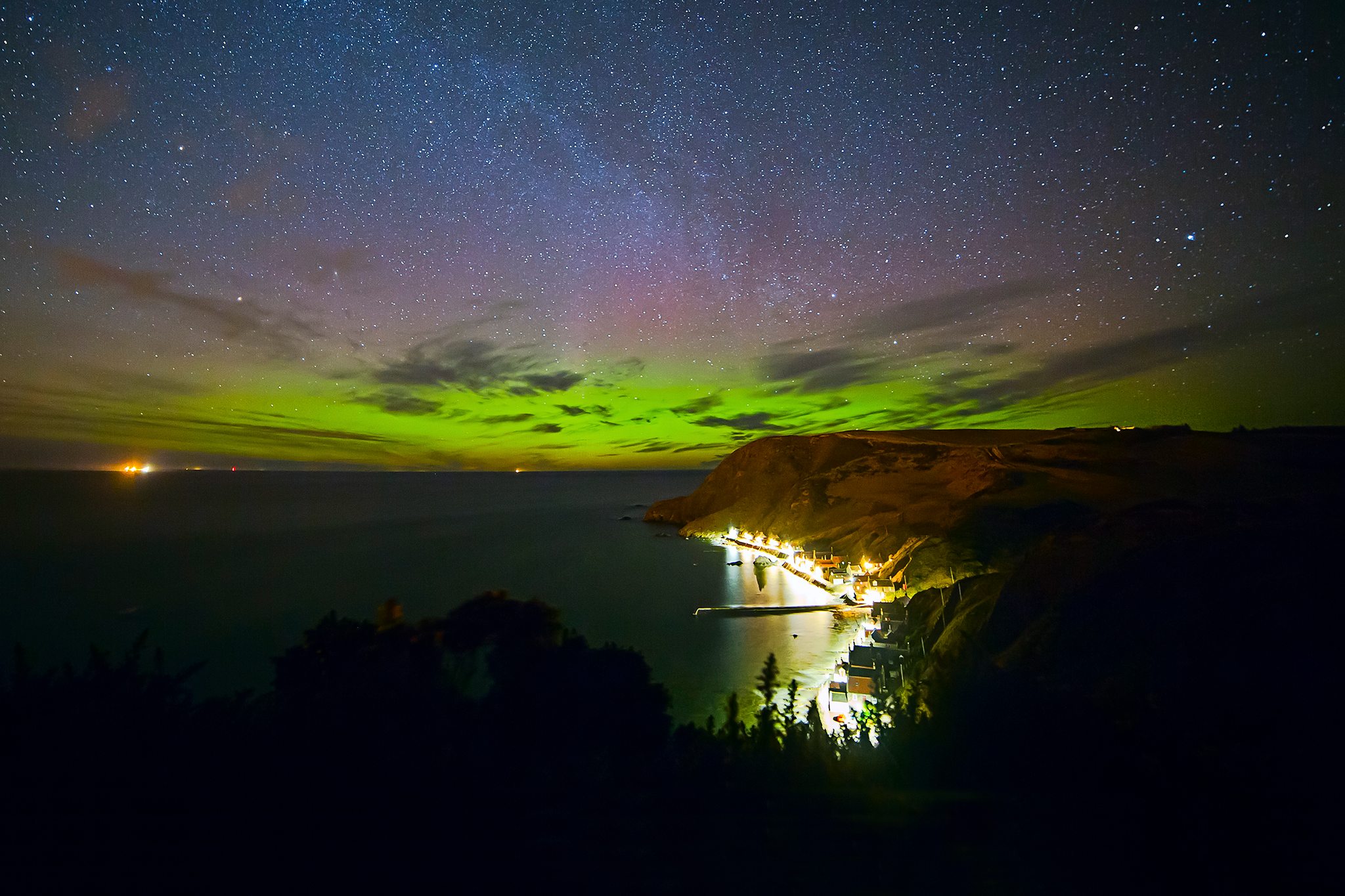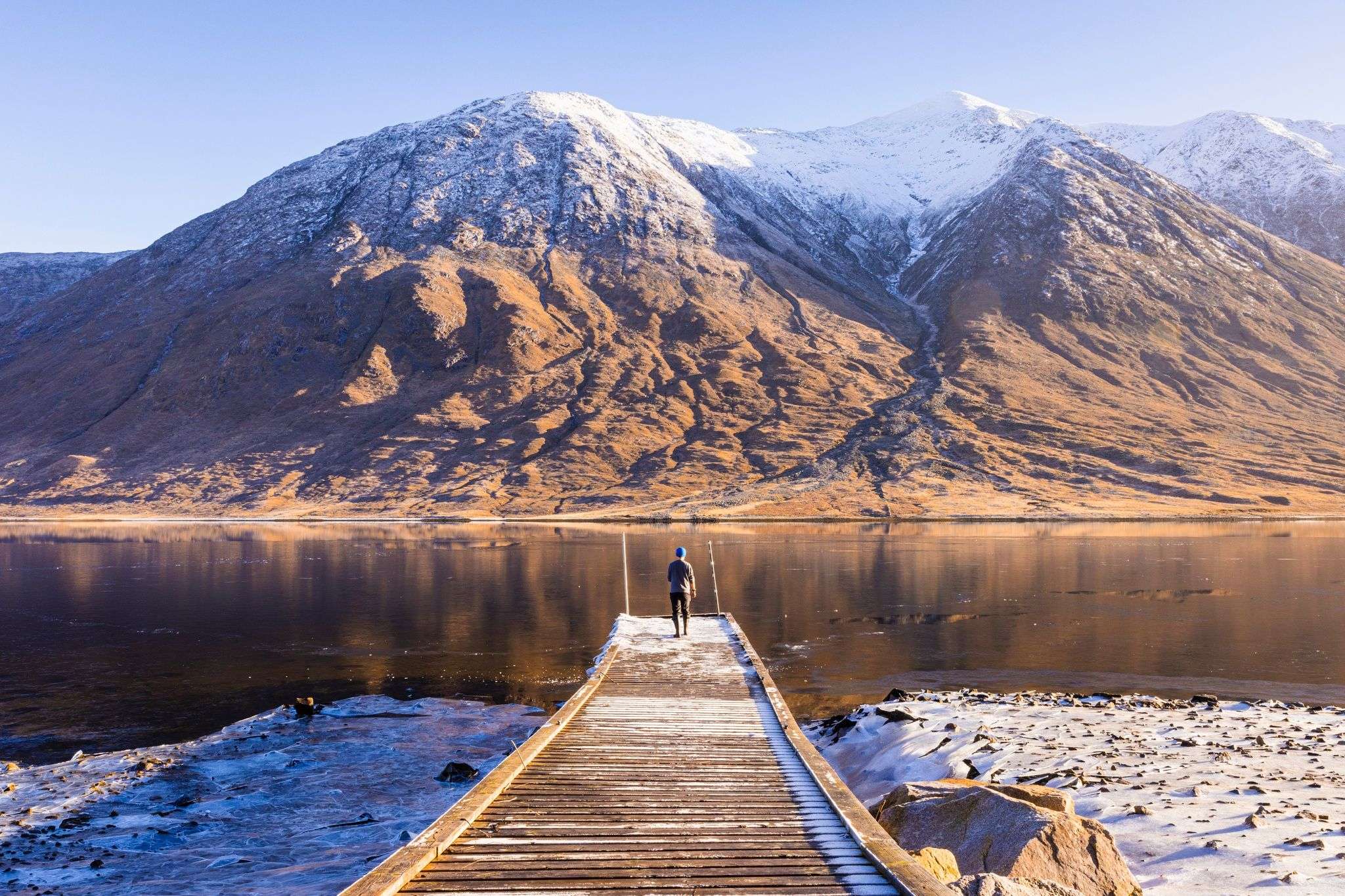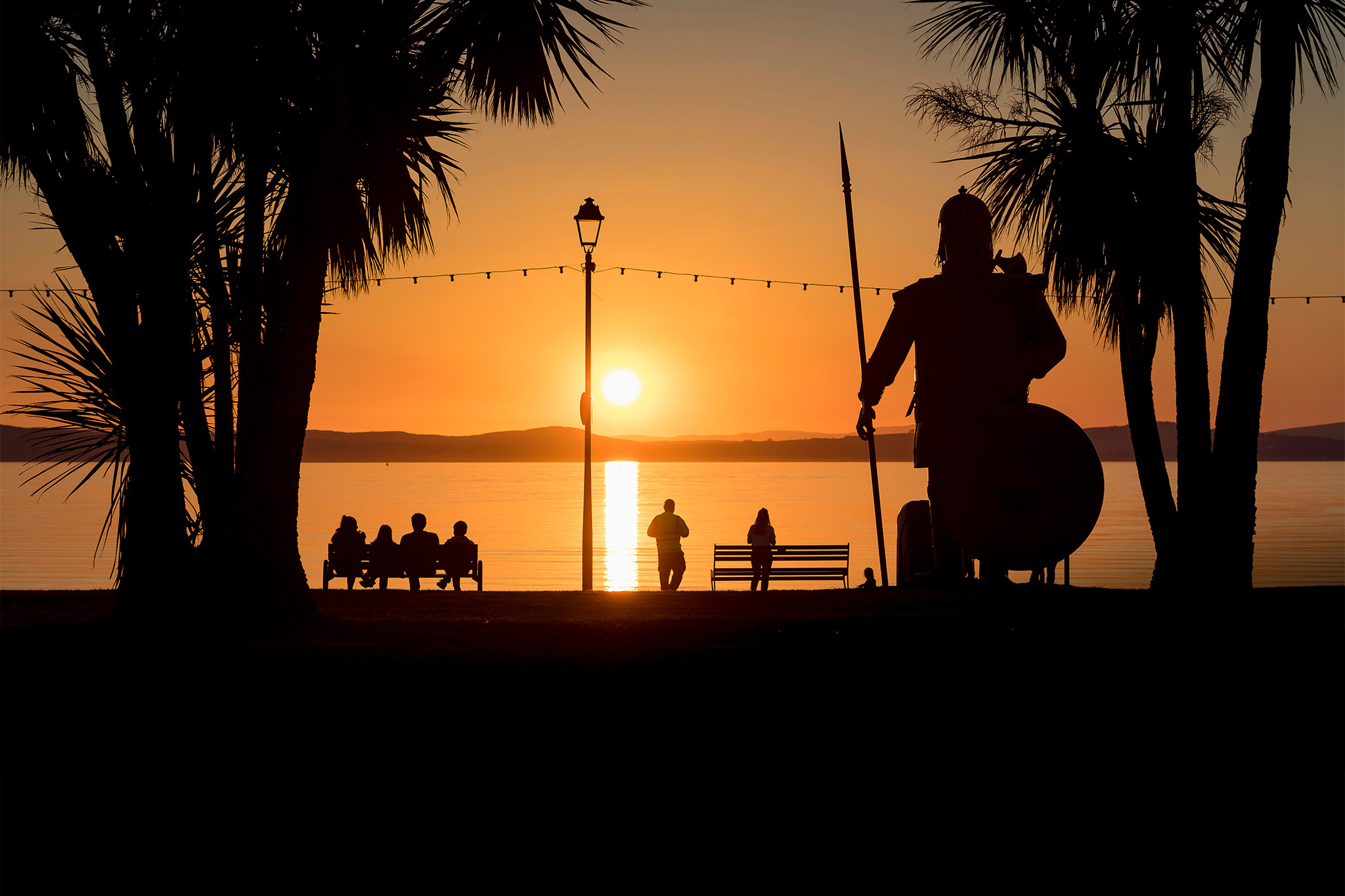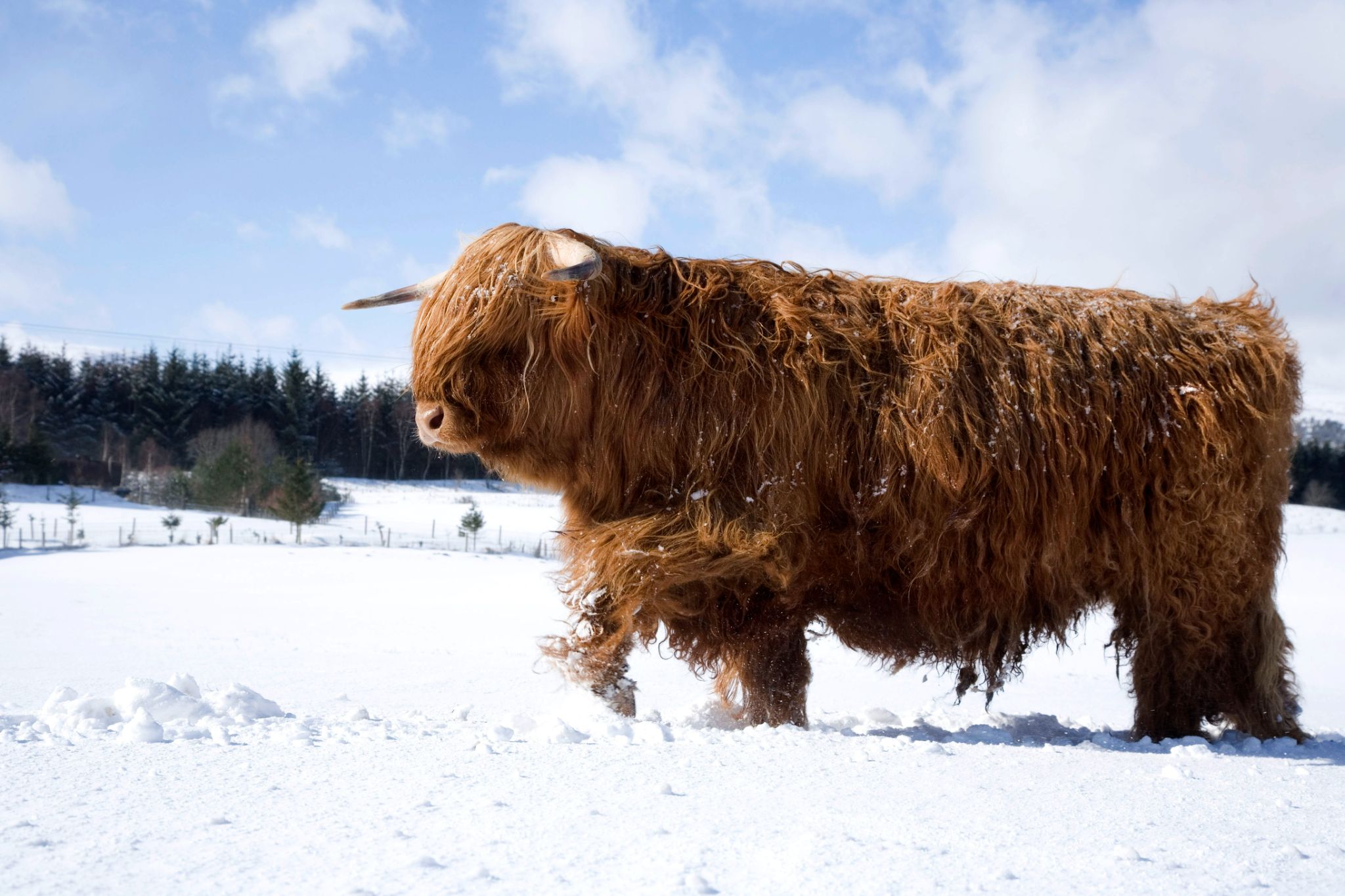
Highland cow in the snow near Inverurie
Although glistening snow-capped mountain tops, frozen lochs and frost-covered trees create a dreamy winter landscape, sometimes our weather just doesn’t want to play ball! We all love a bit of snow so we can get out on the slopes, enjoy wintery family walks and even a snowball fight or two, but Scotland’s changing climate can mean that the snow turns to rain or sleet quite quickly. However, Scotland’s weather can create some atmospheric settings; cosy up with dram whilst it’s drizzling outside, or embrace the weather and the elements and get outdoors anyway with a moody wander or a warming coffee in a lochside café.
Whatever the weather, it won’t stop you from enjoying a winter break in Scotland, with our magical events, alternative winter activities and experiences, cosy accommodation and more, you’ve got a memorable trip waiting for you.
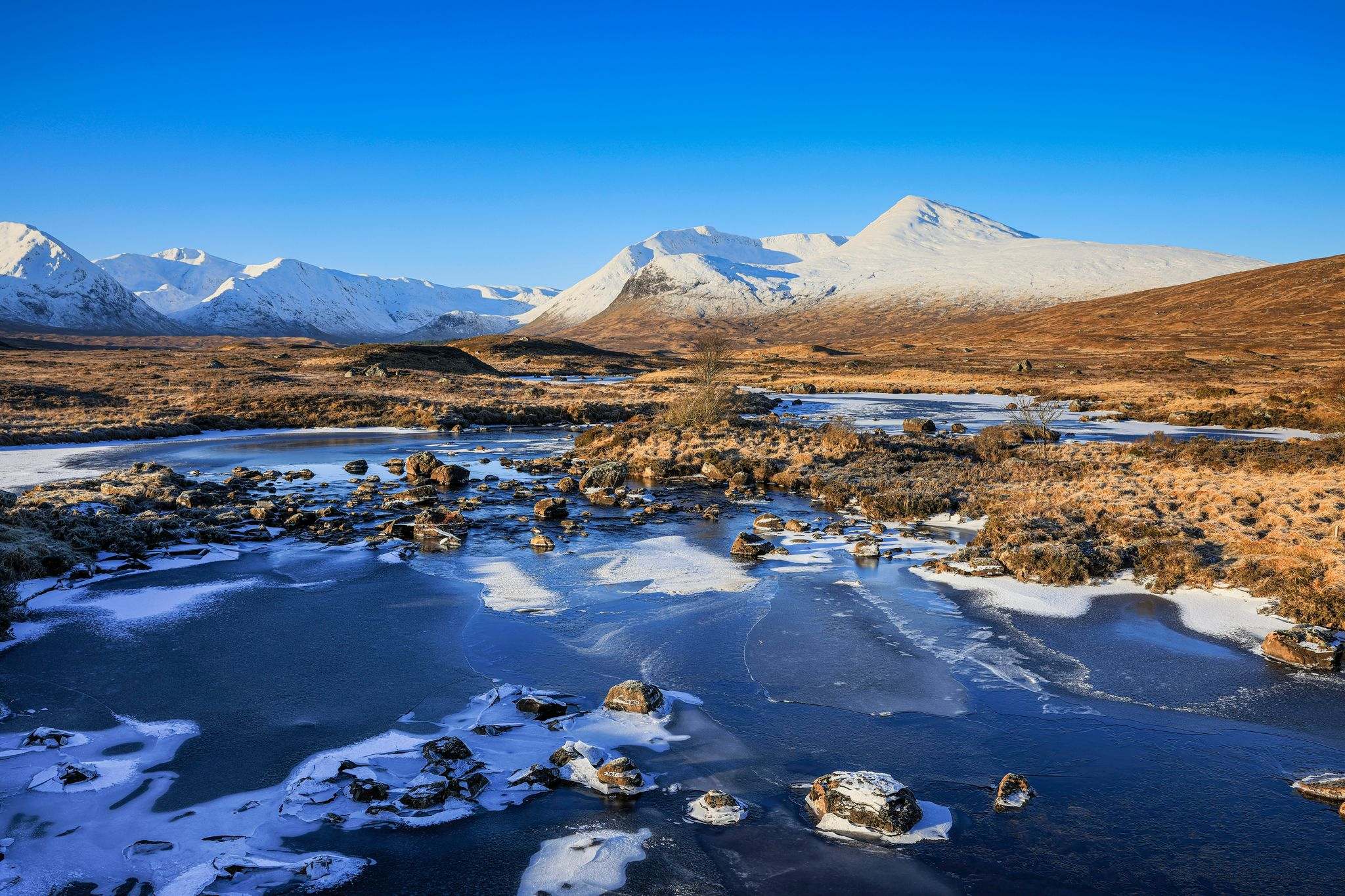
Rannoch Moor
When does winter start and what are the daylight hours in Scotland?
While Scots often like to complain that winter lasts all year, the dark nights offer a chance to coorie up, watch the twinkling night skies and enjoy a wee dram or two.
Scotland’s winter months span roughly from mid-November till early March.
- October – 8am to 6pm
- November – 8am to 4pm (after the clocks change)
- December – 8.30am to 3.30pm
- January – 8.30am to 4pm
- February – 7.30am to 5pm
- March – 6.30am to 6.30pm (before the clocks change)
These rough timings are for Edinburgh - the further north you go, the later the sun will rise and earlier it will set. Did you know that the further north you go in Scotland the sun barely breaks the horizon? Although this may sound gloomy, it actually create amazing settings to catch a some beautiful winter skies and lighting all day long.
A family enjoy a snowball fight at Castle Fraser
© VisitScotland / Paul Tomkins
What attractions are open?
Scotland has plenty of attractions open all year round which are often quieter in the autumn and winter months. There are some that close from November to March, so it’s best to check directly for up-to-date information.
Does it snow in winter in Scotland?
Yes, but maybe not as often as you think. On average, it snows for around 20 days per year, but it can depend where you’re staying. Let’s be honest, Scotland’s climate isn’t a stranger to slush and rain in winter, but all you need is a thick woolly jumper, a mug of hot chocolate and some boots or wellies and you’re good to go!
For our coastal locations, it has to be a severe snow to catch, while in the Cairngorms, you can still find snow in June! It certainly shouldn’t stop you travelling around, but it’s good to be prepared and check the forecast.
How cold is winter in Scotland?
Scotland actually has a pretty moderate climate, even in winter. January and February are generally the coldest months, but even then the daytime maximum temperatures average from 5-7°C (41-45°F) - much higher than other places on the same latitude such as Hudson Bay in Canada, Stavanger in Norway and Nunivak Island in Alaska.
